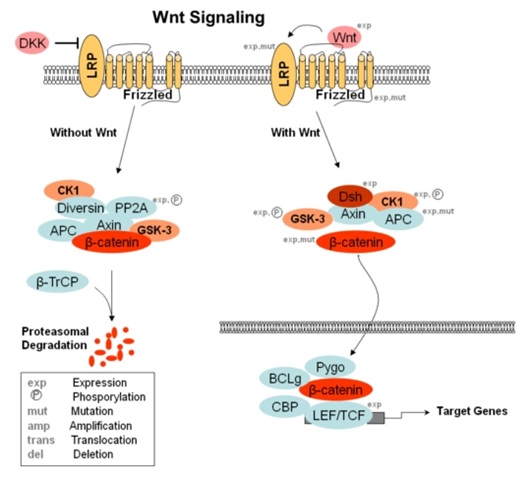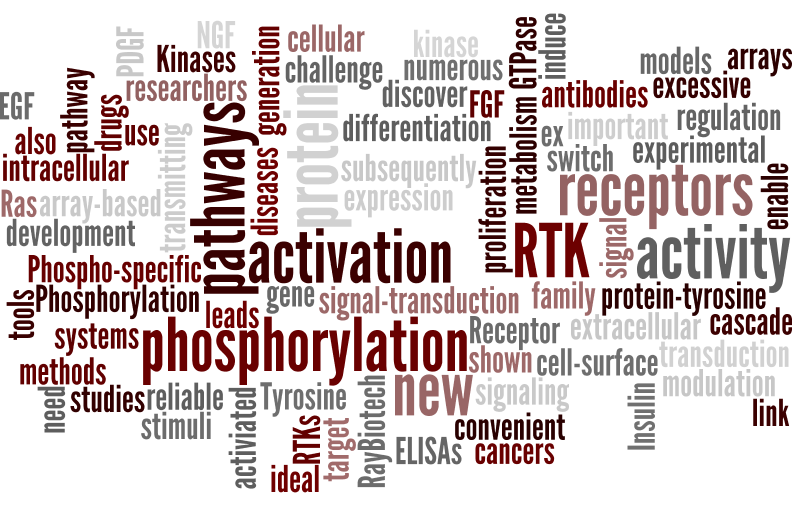Detecting ubiquitylation

Determining the linkage of polyubiquitin on target proteins is challenging. The traditional methods are either through Mass Spectrometry or immunoblot with linkage specific antibodies, which are cumbersome. LifeSensors has developed the UbiTest assay, a more definitive method for demonstrating the ubiquitylation linkage of a protein, which is to couple immunoprecipitation of polyubiquitylated protein with digestion by a linkage specific deubiquitylase prior to immunoblot analysis. An increased signal for the unmodified substrate or a decreased signal of polyubiquitylated substrate at high molecular weight after K48/K63 specific DUB treatment is a clear indication that the protein was K48/K63 ubiquitylated.
This kit has been built around the use of TUBEs which bind to all ubiquitin chain linkages. Tandem Ubiquitin Binding Entities (TUBEs) were developed by Dr. Manuel Rodriquez at CIC bioGUNE and are licensed by LifeSensors, Inc..
TUBEs are engineered tandem UBAs with dissociation constants for tetra-ubiquitin in the nanomolar range. TUBEs have also been demonstrated to protect proteins from both deubiquitylation and proteasome-mediated degradation, even in the absence of inhibitors normally required to block such activity. The nanomolar affinity of TUBEs for polyubiquitylated proteins allows high efficiency isolation and characterization of these proteins from cell lines and tissues. TUBE1 has been demonstrated to bind to all 8 linkage types.
The superior nature of TUBEs allows efficient detection of polyubiquitylated proteins in their native state, while the versatility of TUBEs meets a wide range of experimental needs.
The workflow of the UbiTest assays is shown in Fig 1. You can essentially answer two questions with the test results:
- Is my protein of interest ubiquitylated?
- If my protein is ubiquitylated, which type of ubiquitin linkage is it?
3 different UbiTest assays – which one fits your needs?
- UbiTest Pack is a solution in ubiquitin detection and identification. This tool allows you to identify ubiquitylation while also classifying linkage type. Currently, the Pack includes K48, K63, and non-specific DUBs. More linkage specific DUBs are on the way!
- If you are already relatively sure your protein is being ubiquitylated, but you don’t know the specific linkage, you do not need the full UbiTest Pack kit. UbiTest Scout allows researchers to choose any one linkage specific DUB. All the precision without the cost of unnecessary components.
- If you are unsure whether your protein of interest is ubiquitylated or not, then UbiTest Alpha is the perfect place to start. By using the promiscuous USP2core to cleave all the ubiquitin from your protein, UbiTest Alpha will provide definitive proof of ubiquitylation.

Typical results obtained with the UbiTest assay
Ubiquitylation linkage of proteins in Jurkat cells have been analyzed (Fig 2). Fig 2 A shows that the signal of MDM2 (an E3 ubiquitin-protein ligase) increased after USP2 treatment which indicated that MDM2 is polyubiquitylated. After OTUB1 treatment, which specifically hydrolyzes K48 polyubiquitin, there was increased MDM2 signal in immunoblot. This indicates MDM2 is K48 ubiquitylated. The MDM2 signal is higher on immunoblot, because OTUB1 does not hydrolyze the proximal Ub on the target protein or there were different linkages of polyubiquitin other than K48 chain.
Fig 2 B shows that the signal of unmodified TNFR1 (TNF receptor 1) increased after USP2 treatment which indicated that TNFR1 is polyubiquitylated as well. After AMSH treatment, which specifically hydrolyzes K63 polyubiquitin, there was a decrease in signal of polyubiquitylated TNFR1 at high molecular weight and increase signal of unmodified TNFR1, which indicates TNFR1 is K63 ubiquitylated. The AMSH did not hydrolyze all the polyubiquitin chains on the TNFR1 indicates there were different chain linkages other than K63 chain (mix chains).
If you are interested in testing whether your protein of interest is ubiquitylated, please contact me with the form below for further information about the UbiTest series of kits.
 Interested in learning more about tools like this?
Interested in learning more about tools like this?Subscribe to thematic newsletters on your favourite research topics.
Some background about ubiquitin…
Ubiquitin is a small polypeptide that can be conjugated via its C-terminus to amine groups of lysine residues on target proteins. This conjugation is referred to as monoubiquitylation. Additional ubiquitin moieties can be conjugated to this initial ubiquitin utilizing any one of the seven lysine residues (K6, K11, K27, K29, K33, K48 and K63) present in ubiquitin. Met1-linked (M1) or ‘linear’ chains, are generated when ubiquitin is attached to the N-terminus of a second ubiquitin. The formation of these ubiquitin chains is referred to as polyubiquitylation.
The two most well characterized forms of this are K48 and K63 polyubiquitylation. The most prevalent consequence of polyubiquitylation is the proteasome-mediated degradation of the target protein. Polyubiquitylation is a reversible process, as these chains are degraded and/or removed by proteases known as deubiquitinases (DUBs). The dynamic nature of this signaling represents a major obstacle to the isolation and functional characterization of polyubiquitylated proteins. For this reason, the ubiquitylation state of many proteins is unknown or poorly characterized. Hence the need for reliable assays!



